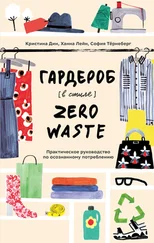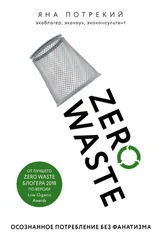 Smaller portions of meat can share the plate with fruits, vegetables, grains, and dairy products. Saturated fat is what is most linked to disease. Saturated fat isn’t just found in meat, however; it’s also found in coconut and palm oils, ghee, butter, and processed baked goods.
Smaller portions of meat can share the plate with fruits, vegetables, grains, and dairy products. Saturated fat is what is most linked to disease. Saturated fat isn’t just found in meat, however; it’s also found in coconut and palm oils, ghee, butter, and processed baked goods.
With the wide range of information (and misinformation) out there about diet and nutrition, we’ve lost sight of simple, balanced eating. Including a variety of foods in your diet, especially fruits, vegetables, beans, and grains, defines balanced eating.
As the surrounding sections point out, there are many benefits of zero waste cooking. You’ve got to find that sweet spot, where you’re balancing your plate, wasting less food (and perhaps getting more creative), and, of course, enjoying what you eat, too!
 If reducing the environmental impact of food waste and your diet and behaviors is your primary goal, that’s great. However, I don’t recommend abandoning health guidelines. Including a vegetarian dish once or twice a week isn’t about shaming meat; it’s about adding more variety and nutrition to your diet.
If reducing the environmental impact of food waste and your diet and behaviors is your primary goal, that’s great. However, I don’t recommend abandoning health guidelines. Including a vegetarian dish once or twice a week isn’t about shaming meat; it’s about adding more variety and nutrition to your diet.
Pros and cons to plant-based eating
Eating more plants is good for your health. We know that a diet rich in fiber and low in saturated fat supports heart and brain health and may reduce the risk of some cancers. In addition to reducing disease risk, adding these foods may even help you live longer. That’s good reason to try adding more vegetables and beans to your diet.
 Beans are truly a superfood and definitely a food-to-include if you want to shift to plant-based eating. They’re an affordable source of protein and an excellent source of fiber, and they provide iron, folate, potassium, and magnesium. In fact, the U.S. Dietary Guidelines recommend that you include 3 cups of legumes every week. Check out Chapter 6for more information about incorporating them into your diet.
Beans are truly a superfood and definitely a food-to-include if you want to shift to plant-based eating. They’re an affordable source of protein and an excellent source of fiber, and they provide iron, folate, potassium, and magnesium. In fact, the U.S. Dietary Guidelines recommend that you include 3 cups of legumes every week. Check out Chapter 6for more information about incorporating them into your diet.
FROM ZERO WASTE TO MORE TIME AT THE TABLE
As you think about ways you can reduce food waste and incorporate more grains, beans, nuts, fruits, and vegetables into your diet, consider this: Eating this way may help you live longer.
Author Dan Buettner is a National Geographic Fellow whose work identified five areas in the world where people live the longest, healthiest lives: Okinawa, Japan; Sardinia, Italy; Nicoya, Costa Rica; Ikaria, Greece, and Loma Linda, California. The common ground in each culture is a plant-based diet, connections with family and friends, laughter, and daily physical activity. For example, in Sardinia, they eat a diet focused on whole grains, vegetables, beans, and goat’s milk. They include meat as a flavor enhancer and accent to plant-based dishes. They also enjoy a Pecorino cheese made from sheep that supplies high levels of omega-3 fatty acids. They stay close with their family, enjoy shared meals and red wine, laughter with friends, and regular walks.
This sort of lifestyle is worth considering, no matter where you live! Slow down, prepare more meals to share with family and friends, laugh, and take a walk after dinner.
Reducing your food waste may also help mitigate climate change because food is the single largest category of material placed in municipal landfills. When food rots, it produces methane, a greenhouse gas (GHG) that is related to climate change. Landfills are the third-largest source of human-related methane emissions in the United States.
 When you throw away food, you’re also throwing away all the energy and emissions from the production, packaging, and delivery of that food.
When you throw away food, you’re also throwing away all the energy and emissions from the production, packaging, and delivery of that food.
 So what about eating less meat to save the planet, you ask? I recently read a magazine article that claimed that eating one less serving of beef a week for the year could be equivalent to driving 348 fewer miles. Statements like that are questionable. I have no idea how the author came to that conclusion (because no proven algorithms exist for it), but I often see “meat shaming” as a tactic to help save the environment. The article went on to say that ruminant animals are the “worst offenders” when it comes to greenhouse gas emissions and advised that the reader look for third-party certifications such as Animal Welfare Approved. These types of statements are misleading and without context. In addition, while animal welfare is important, it doesn’t have a direct impact on greenhouse gas emissions.
So what about eating less meat to save the planet, you ask? I recently read a magazine article that claimed that eating one less serving of beef a week for the year could be equivalent to driving 348 fewer miles. Statements like that are questionable. I have no idea how the author came to that conclusion (because no proven algorithms exist for it), but I often see “meat shaming” as a tactic to help save the environment. The article went on to say that ruminant animals are the “worst offenders” when it comes to greenhouse gas emissions and advised that the reader look for third-party certifications such as Animal Welfare Approved. These types of statements are misleading and without context. In addition, while animal welfare is important, it doesn’t have a direct impact on greenhouse gas emissions.
 Agricultural systems are quite complex, as is the entire food supply chain. In any large system, there’s always a need for ongoing reevaluation and improvement. This book doesn’t aim to address all aspects of climate change and greenhouse emissions and the environment. As consumers, we’re responsible for the choices in our own households. You do you.
Agricultural systems are quite complex, as is the entire food supply chain. In any large system, there’s always a need for ongoing reevaluation and improvement. This book doesn’t aim to address all aspects of climate change and greenhouse emissions and the environment. As consumers, we’re responsible for the choices in our own households. You do you.
Food waste and animal welfare are separate topics. However, in my experience, when people use terms such as factory farming and animal welfare, they’re often taking a particular vegetarian-leaning stance. Large livestock farms in the United States are generally managed by people whose families have owned the land for many decades — which may not be what comes to mind when you hear the term factory farm. They’re large, family-owned farms. I maintain that most of the beef, veal, pork, lamb, and poultry that you find at your local food markets were raised and slaughtered as humanely as possible.
 As a registered dietitian, I advise on nutrition and healthy lifestyle habits. Specific choices are yours to make; my goal is to share the science (as the body of evidence in how diet impacts health) and to help you keep all the chatter about food, diet, the planet, and health in perspective.
As a registered dietitian, I advise on nutrition and healthy lifestyle habits. Specific choices are yours to make; my goal is to share the science (as the body of evidence in how diet impacts health) and to help you keep all the chatter about food, diet, the planet, and health in perspective.
THE CONSCIENTIOUS OMNIVORE: JARGON OR ADVOCACY?
The term conscientious omnivore was likely coined about 15 years ago. Perhaps a former vegetarian, who wanted to feel good about eating meat, thought that making statements about “only eating ethically raised meat” would make them feel good.
After visiting more than a dozen farms, including a large beef operation and a small grass-finished beef farm, the farmers I’ve met take caring for the land and their animals very seriously. My definition of conscientious omnivore is one whose diet focuses on legumes, vegetables, fruits, and grains (that is, plant foods) but can include small amounts of meat and dairy, too.
From a clinical nutrition standpoint, a diet high in fiber that is balanced for carbohydrate, protein, and fat (mostly healthy monounsaturated fats), and is limited in sugar and sodium, is related to the lowest disease risk. Fresh beef, pork, and poultry are good sources of protein and provide a lot of important nutrients, including B vitamins (thiamin, B6, B12, and niacin) and minerals (phosphorus, iron, zinc, and selenium). Animal foods do contribute cholesterol to the diet, but when you’re eating small portions, it’s not an issue.
Читать дальше

 Smaller portions of meat can share the plate with fruits, vegetables, grains, and dairy products. Saturated fat is what is most linked to disease. Saturated fat isn’t just found in meat, however; it’s also found in coconut and palm oils, ghee, butter, and processed baked goods.
Smaller portions of meat can share the plate with fruits, vegetables, grains, and dairy products. Saturated fat is what is most linked to disease. Saturated fat isn’t just found in meat, however; it’s also found in coconut and palm oils, ghee, butter, and processed baked goods. If reducing the environmental impact of food waste and your diet and behaviors is your primary goal, that’s great. However, I don’t recommend abandoning health guidelines. Including a vegetarian dish once or twice a week isn’t about shaming meat; it’s about adding more variety and nutrition to your diet.
If reducing the environmental impact of food waste and your diet and behaviors is your primary goal, that’s great. However, I don’t recommend abandoning health guidelines. Including a vegetarian dish once or twice a week isn’t about shaming meat; it’s about adding more variety and nutrition to your diet. So what about eating less meat to save the planet, you ask? I recently read a magazine article that claimed that eating one less serving of beef a week for the year could be equivalent to driving 348 fewer miles. Statements like that are questionable. I have no idea how the author came to that conclusion (because no proven algorithms exist for it), but I often see “meat shaming” as a tactic to help save the environment. The article went on to say that ruminant animals are the “worst offenders” when it comes to greenhouse gas emissions and advised that the reader look for third-party certifications such as Animal Welfare Approved. These types of statements are misleading and without context. In addition, while animal welfare is important, it doesn’t have a direct impact on greenhouse gas emissions.
So what about eating less meat to save the planet, you ask? I recently read a magazine article that claimed that eating one less serving of beef a week for the year could be equivalent to driving 348 fewer miles. Statements like that are questionable. I have no idea how the author came to that conclusion (because no proven algorithms exist for it), but I often see “meat shaming” as a tactic to help save the environment. The article went on to say that ruminant animals are the “worst offenders” when it comes to greenhouse gas emissions and advised that the reader look for third-party certifications such as Animal Welfare Approved. These types of statements are misleading and without context. In addition, while animal welfare is important, it doesn’t have a direct impact on greenhouse gas emissions.










